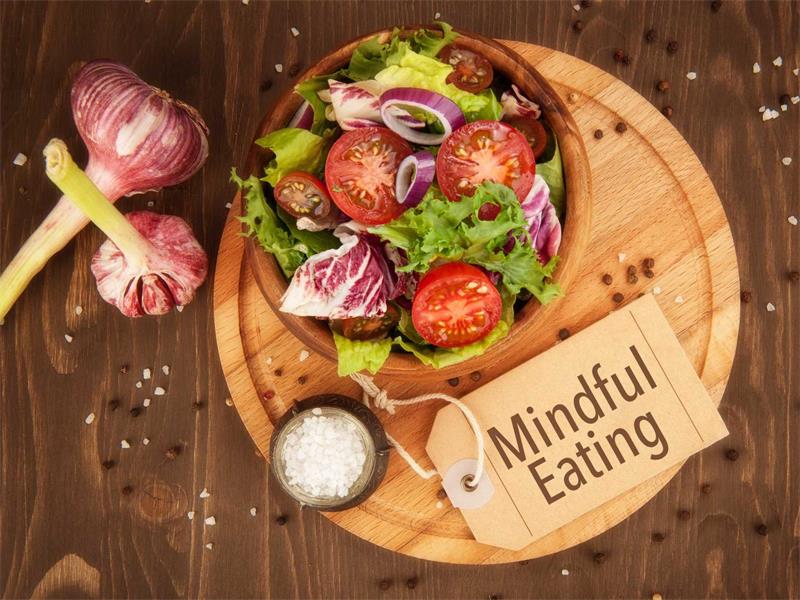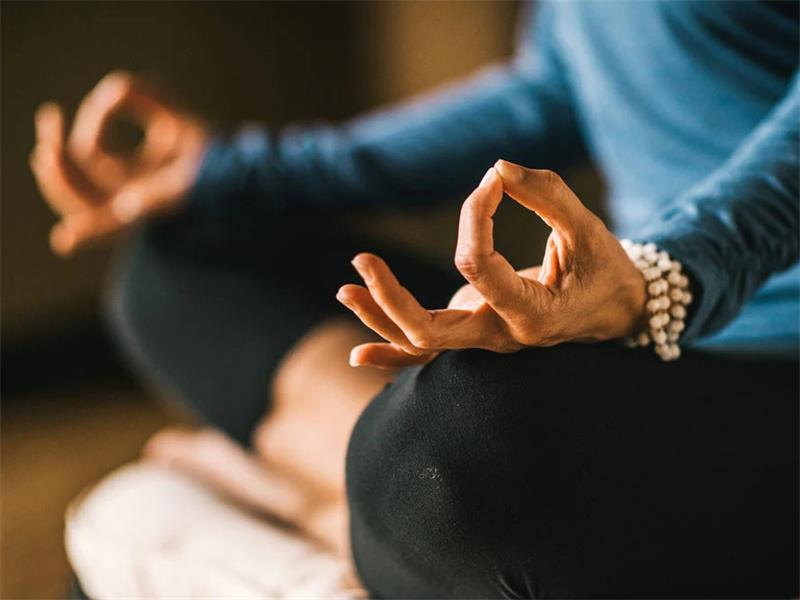Contents
- 1 Introduction
- 2 Start Small: Gratitude Journaling
- 3 The Power of Mindfulness and Presence
- 4 Reflect on Challenging Times
- 5 Incorporate Gratitude into Daily Life
- 6 Conclusion
Introduction
The Power of Gratitude
Gratitude is a powerful tool that can greatly improve our lives. Simply put, gratitude is the act of being thankful and appreciative of the good things in our lives.
It doesn’t have to be something big; even small things like a warm cup of coffee in the morning, or a kind word from a friend, can inspire feelings of gratitude. The benefits of practicing gratitude are numerous and well-documented.
Studies show that people who regularly practice gratitude tend to be happier, more optimistic, and experience better physical health than those who don’t. Additionally, grateful people tend to have stronger relationships with others and are more resilient in the face of adversity.
My Personal Experience with Gratitude
For me personally, practicing gratitude has been a game-changer. A few years ago, I went through a difficult time in my life where everything seemed to be going wrong.
I was filled with anxiety and stress, and couldn’t seem to shake it off no matter what I tried. That’s when I stumbled upon the idea of practicing gratitude daily.
At first, it felt silly and forced – how could writing down three things I’m grateful for each day possibly make a difference? But over time, as I made it a habit, something shifted inside me.
I started noticing things in my life that I had taken for granted before – simple pleasures like taking a walk on a sunny day or sharing laughter with friends over dinner. And as I began focusing on these things more often, my overall mood improved significantly.
Now, even on tough days when things don’t go as planned or stress creeps back in, taking time to reflect on what I’m grateful for helps me feel centered and brings peace to my mind. Gratitude truly has the power to transform our lives and bring us more happiness – let’s explore how we can incorporate this simple yet profound practice into our daily routines.
Start Small: Gratitude Journaling
An Introduction to Gratitude Journaling
Gratitude journaling is a simple yet powerful practice that can quickly boost your happiness level. Simply put, gratitude journaling involves taking time each day to write down things you are grateful for. This simple exercise helps train your brain to focus on the positive aspects of life, rather than dwelling on the negative.
Tips for Starting a Gratitude Journal
Starting a gratitude journal is easy and requires only a few minutes each day. To get started, you can use any notebook or app that you have handy.
Here are some tips to help you start your gratitude journal:
1. Make it a daily habit: Set aside 5-10 minutes every day at the same time and place to reflect on what you’re grateful for.
2. Focus on specifics: Write about specific people, experiences, or things that bring joy and gratitude into your life.
3. Be honest: Express genuine gratitude without censoring or second-guessing yourself
4. Mix it up: Try not to repeat the same things every day – explore new areas of gratitude.
5. Use prompts: If you’re struggling with what to write in your gratitude journal, consider using prompts such as “What made me smile today?” or “What am I taking for granted?”
Examples of Things to be Grateful For
There are countless things that we can be grateful for in our lives – big and small! Here are just a few examples:
– The warmth of sunshine on your skin – A good night’s sleep
– A loving family – A kind gesture from someone else
– A delicious meal – Good health
– Opportunities for learning – The beauty of nature
By starting small with this simple practice of expressing thankfulness in written form, we can begin to train our minds to focus on the positive aspects of life. Over time, gratitude journaling can lead to increased happiness, better sleep and heightened levels of optimism, even in the face of difficult times.
Show Appreciation to Others
Gratitude isn’t just about feeling thankful for what we have; it’s also about recognizing the positive impact that others have on our lives. Showing appreciation to others is not only a way to express gratitude but also a way to strengthen relationships and improve our own well-being.
Importance of expressing gratitude to others
Expressing gratitude can help us acknowledge the efforts of others and cultivate positive feelings towards them. It’s easy to take people for granted, but when we take the time to appreciate them, we become aware of how much they contribute to our lives.
Showing gratitude can also foster a sense of mutual respect and trust in relationships. When we express gratitude, we create a positive feedback loop that benefits both ourselves and those around us.
When someone feels appreciated, they are more likely to continue doing things that benefit them or make an effort in their interactions with them. Additionally, studies have found that expressing gratitude can improve our own mood and increase happiness levels.
Simple ways to show appreciation (e.g. saying thank you, writing a note)
Showing appreciation doesn’t have to be complicated or time-consuming; small gestures can make a big impact. Saying thank you is one of the simplest yet most effective ways of expressing gratitude. Whether it’s thanking your partner for cooking dinner or thanking your friend for listening when you needed someone to talk to, saying thank you show that you value them.
Another way is through writing notes or messages expressing appreciation – people love knowing their hard work has been recognized! You could leave sticky notes with kind words on your colleague’s desk or send an email thanking someone for something specific they did that made a difference in your life.
Benefits of expressing gratitude towards others
Apart from increasing happiness levels, there are many benefits of showing appreciation towards others – some scientific research suggests that it can strengthen relationships, improve sleep quality, and increase self-esteem! Additionally, when we express gratitude towards others, we become more aware of the positive aspects of our lives and focus less on the negative. Showing appreciation to others is a powerful way to cultivate gratitude and positive feelings in ourselves and those around us.
Whether it’s through a simple thank you or a heartfelt note, expressing gratitude can improve relationships and overall well-being. So take some time today to show appreciation for someone in your life – it could make all the difference!
The Power of Mindfulness and Presence
When we talk about mindfulness, we’re referring to the act of being present and paying attention to the current moment. It’s about being fully engaged in what you’re doing and not allowing your mind to wander to other things.
When we’re mindful, we’re more in tune with our feelings, thoughts, and surroundings. Practicing mindfulness can lead to countless benefits, one of which is increased gratitude.
By being present at the moment, we become more aware of the beauty around us – whether it’s a stunning sunset or simply spending time with loved ones. When we take the time to appreciate these moments fully, it helps us cultivate an attitude of gratitude.
How Being Present Can Lead To More Opportunities For Gratitude
It’s important to note that practicing mindfulness doesn’t necessarily come naturally for everyone – especially those of us who are constantly on the go. However, with practice comes progress!
When you make a conscious effort to be present in each moment, you’ll start noticing things that you may have overlooked before. You’ll notice how good your morning coffee tastes or how warm the sun feels on your skin.
When you intentionally focus on being present and cultivating an attitude of gratitude, you’ll begin seeing even more opportunities for appreciation in your life. Expressing thankfulness for small things like a warm blanket or a kind gesture from a stranger can help shift your perspective towards positivity and gratitude.
Simple Mindfulness Exercises
If you’re new to practicing mindfulness, there are several simple exercises that you can try out! One popular method is called “body scan meditation.” This involves lying down comfortably and focusing on each part of your body individually – from your toes all the way up to the top of your head. Another exercise is simply taking time throughout your day to pause and take a few deep breaths.
As you breathe in and out, focus on the sensation of the air moving through your nose and lungs. This can help bring you back to the present moment and foster feelings of gratitude.
Remember, practicing mindfulness isn’t about being perfect – it’s about making a conscious effort to be present in each moment. Over time, this will help you cultivate an attitude of appreciation and make gratitude a natural part of your daily life.
Reflect on Challenging Times
Life is full of ups and downs, and we all experience challenging times at some point. However, these difficult experiences can serve as opportunities for growth and learning. By reflecting on the challenges we face, we can find the silver lining and reframe negative experiences into positive ones.
Importance of finding the silver lining in challenging situations
Finding the silver lining in a difficult situation means focusing on the positive aspects rather than dwelling on the negative. This doesn’t mean ignoring or denying the challenges we face, but rather looking for ways to learn and grow from them. By adopting this mindset, we can become more resilient and better equipped to handle future challenges.
Tips for reframing negative experiences into positive ones
One way to reframe negative experiences is to focus on what we’ve learned from them. For example, if you experienced a setback at work, instead of seeing it as a failure, think about what you learned from it and how you can improve next time.
Another tip is to practice gratitude by focusing on what you do have rather than what you don’t have. This can help shift your perspective and make it easier to find positivity in difficult situations.
Examples of lessons learned from difficult times
Difficult times can teach us valuable lessons that stay with us for life. For example, going through a breakup may teach us about self-love and the importance of setting boundaries in relationships. Struggling with an illness may teach us about resilience and our own inner strength.
By reflecting on these lessons, we can find meaning in our challenges and use them as opportunities for growth. When faced with challenging times it’s important to reflect on what we’ve learned from those difficulties so that we don’t repeat our mistakes again later down life’s journey!
Incorporate Gratitude into Daily Life
Suggestions for incorporating gratitude into daily routines (e.g. mealtime, bedtime)
Gratitude isn’t just a mindset; it’s a behavior. One of the best ways to make gratitude a part of your life is to incorporate it into your daily routines. A great place to start is mealtime.
Before you eat, take a moment to acknowledge and give thanks for the food in front of you. It doesn’t have to be anything formal – just a few words of thanks will do the trick.
You’ll find that this simple act will help you appreciate your meals more and feel more satisfied after eating. Another great time to practice gratitude is at bedtime.
Before you go to sleep, reflect on the good things that happened during your day and think about what you’re grateful for. This can be as simple as saying “thank you” silently before drifting off or keeping a journal by your bedside where you write down three things that made you happy each day.
Benefits of making gratitude a habit
Making gratitude a regular part of your life may seem like a small thing, but it can have big benefits for your overall happiness and well-being. Gratitude has been linked with lower levels of stress and depression, higher levels of optimism and positive emotions, and even better physical health.
When we make an effort to focus on the good things in our lives instead of dwelling on the bad, we train our brains to look for positivity instead of negativity. This can lead to an overall shift in perspective that helps us feel happier and more content with our lives.
Incorporating gratitude into our daily routines also helps us build stronger relationships with others by encouraging us to express appreciation for their actions or presence in our lives. This can lead to increased feelings of connection and less loneliness.
So why not give it a try? Make gratitude a habit in your life and see how it can make a difference in your overall happiness and well-being.
Conclusion
Throughout this article, we have delved into the many ways practicing gratitude can make us happier and more fulfilled people. By starting small with gratitude journaling, we can develop an attitude of appreciation and begin to notice the good things in our lives. By showing gratitude to others, we strengthen our relationships and build a network of support that can help us through tough times.
Practicing mindfulness and being present allows us to fully experience and appreciate the world around us, while reflecting on challenging times helps us find meaning and growth in adversity. By incorporating gratitude into our daily lives, we create habits that reinforce positivity and make it easier to find happiness even in difficult circumstances.
The benefits of practicing gratitude are many – from better mental health to improved physical health to stronger relationships with others. By being intentional about cultivating a mindset of appreciation, we are more likely to find joy in the small moments of life and remain resilient when faced with challenges.
So take a moment today to think about what you’re grateful for – write it down or share it with someone you love. And remember that even when life is tough, there is always something to be thankful for if we look hard enough.












